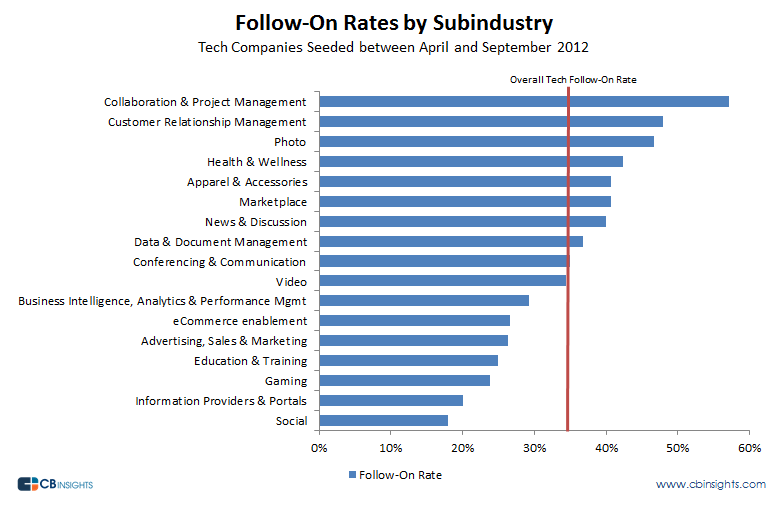Follow-Up on Ed. Tech Investments Lacking, Analysis Suggests
A lot of money has been poured into fledgling educational-technology companies over the past few years by venture capitalists and other investors. But a new analysis suggests that many of the ed-tech providers that received seed funding are not doing well in attracting the follow-up investment that could help their operations grow.
The analysis, published recently by CB Insights, finds that education and training companies lagged behind tech businesses in other sectors in rates of “follow-on” investment—the ability of a business to secure additional funding after getting off the ground.
The furious pace of ed-tech investment has led to some worries that the industry could be on the verge of a bubble, similar to the one that struck the Silicon Valley during the 1990s.
The new numbers, however, aren’t a signal of a soon-to-be-bursting bubble, said Anand Sanwal, the co-founder of CB Insights, a New York City-based company that tracks and analyzes market research and data. It’s just as likely a “healthy sign that the market is working,” he explained in an interview.
On the one hand, it’s true that in education, a lot of “mediocre companies got funded by mediocre, me-too investors,” said Sanwal, noting that there are plenty of stellar ed-tech companies on the playing field, and he thinks the market is still hot.
A bubble occurs when the interest in a sector doesn’t reflect the reality of demand in the market, and everything, it seems, is getting funded, no matter the quality, Sanwal said in an e-mail explaining the findings. What’s happening here, he said, is that investors are not putting money in companies they don’t think will make it, which will whittle down the oversupply of ed-tech players in the market, he argued.
Why would investors be inclined to cut off the flow of investment in certain ed-tech companies? One likely reason is that it’s notoriously difficult for new businesses to break into in the insular K-12 market, and when those companies can’t demonstrate that there’s an interest in their products, investors are inclined to cut them off. (See Education Week’s continuing series of stories about a pair of education startups attempting to gain a foothold in the market.)
The lack of follow-on investment means “there’s still some discipline in the market,” Sanwal said. “That’s the opposite of a bubble…[To date] we’ve had a lot of companies getting early-stage seed funding. Probably too many.”
CB Insights’ analysis did not examine whether the ed-tech companies were focused on K-12, college, or employee-training markets, he noted.
Follow-on investment rates are, on the whole, declining for tech companies, but the performance in that area was not uniform across a cohort of 762 seeded companies evaluated by CB Insights.
Tech startups focused on collaboration and project management, health and wellness, photography, among other diverse areas, did well in terms of follow-on investment, the research found. Education- and training-focused tech programs ranked near the bottom, along with gaming, information portals, and social companies.
See the full breakdown, below:

